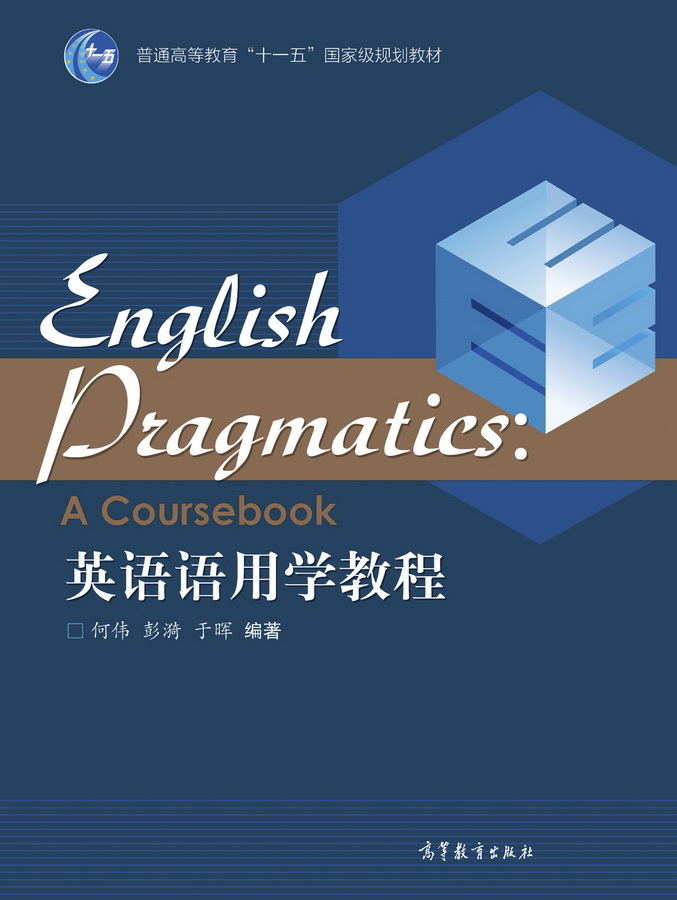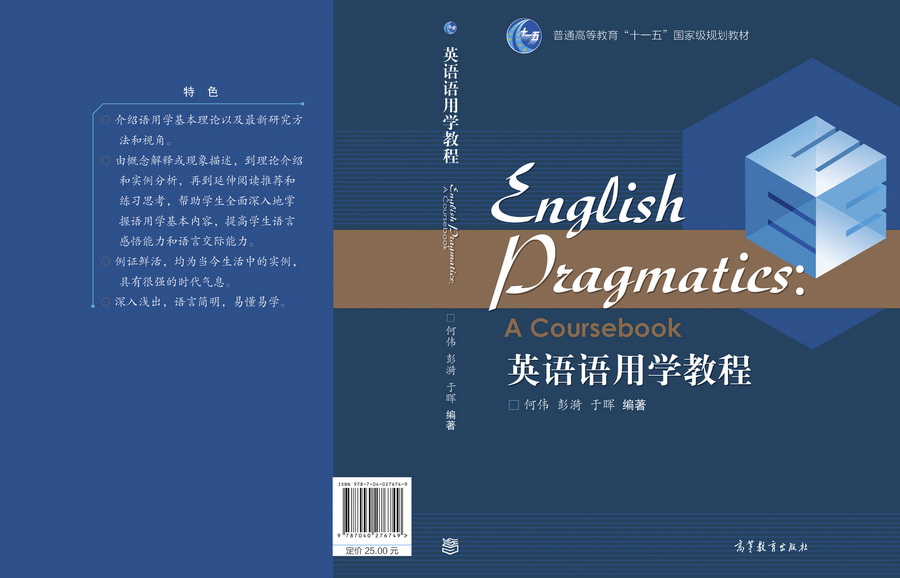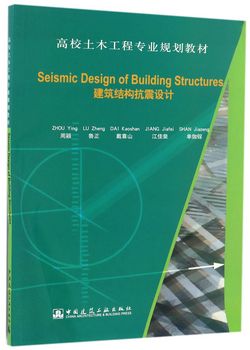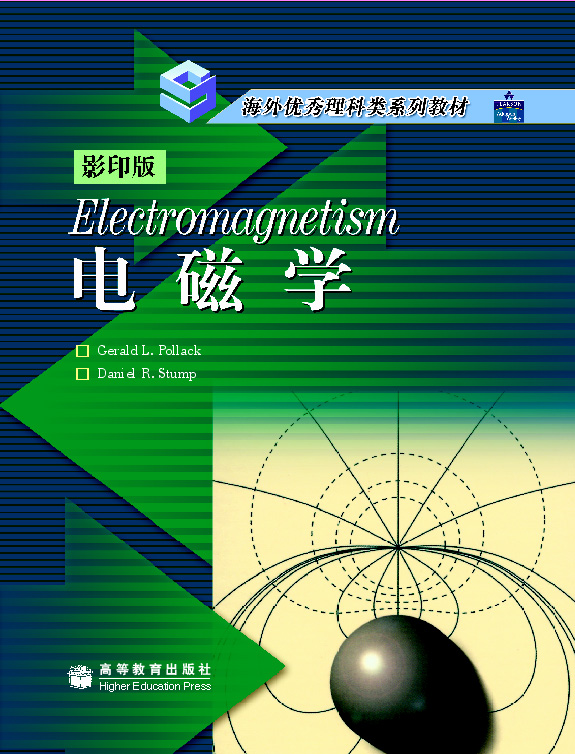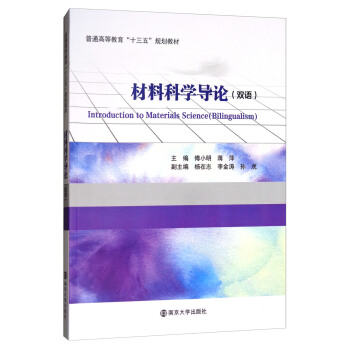英语语用学教程
作者: 何伟 彭漪 于晖
出版时间:2010-01-29
出版社:高等教育出版社
普通高等教育“十一五”国家级规划教材
- 高等教育出版社
- 9787040276749
- 1
- 82620
- 0041156822-3
- 平装
- 16开
- 2010-01-29
- 253
- 164
《普通高等教育“十一五”国家级规划教材·英语语用学教程》用英语写成,举例新颖,内容生动,充满当代语用学的气息。作为入门教材,该教程既体现了专业学习的渐进性特点,又呈现了语用学的最新发展动态,是一本理想的语用学知识读本。全书每一章都附有练习题。这些习题均针对相关章节内容而设计,便于学生掌握所学章节知识,并有助于学生提高自身解决实际语言问题的能力,从而达到增强学生语言感悟性的目的。
前辅文
1 Background and defi nitions
1.1 Background of pragmatics
1.2 Defi nitions of pragmatics
1.3 Component vs. perspective
1.4 Uses of pragmatics
1.5 Aims of pragmatics
1.6 Summary and further reading
Questions for discussion
2 Deixis and reference
2.1 Defi nition of deixis
2.2 Types of deixis
2.2.1 Person deixis
2.2.2 Spatial deixis
2.2.3 Temporal deixis
2.2.4 Discourse deixis
2.2.5 Social deixis
2.3 Defi nition of reference
2.4 Referential and attributive usages of referring expressions
2.5 The role of context in identifying referents
2.6 The role of co-text in identifying referents
2.7 The role of anaphora, cataphora and zero anaphora in maintaining reference
2.8 Summary and further reading
Questions for discussion
3 Presupposition
3.1 Defi nition of presupposition
3.2 Distinguishing presupposition from entailment
3.3 Types of presupposition
3.3.1 Existential presupposition
3.3.2 Lexical presupposition
3.3.3 Structural presupposition
3.3.4 Factive presupposition
3.3.5 Non-factive presupposition
3.3.6 Counter-factual presupposition
3.4 Problematic properties
3.4.1 Defeasibility
3.4.2 Projection problem
3.5 Summary and further reading
Questions for discussion
4 Conversational implicature (I)
4.1 Defi nition of implicature
4.2 The cooperative principle
4.3 The four conversational maxims
4.3.1 Observing the maxims
4.3.2 Non-observance of the maxims
4.4 Types of implicature
4.4.1 Conventional implicature
4.4.2 Conversational implicature
4.5 Properties of conversational implicature
4.5.1 Cancelability
4.5.2 Non-detachability
4.5.3 Calculability
4.5.4 Non-conventionality
4.6 Summary and further reading
Questions for discussion
5 Conversational implicature (II)
5.1 The politeness principle
5.2 The six main maxims
5.2.1 The tact maxim
5.2.2 The generosity maxim
5.2.3 The approbation maxim
5.2.4 The modesty maxim
5.2.5 The agreement maxim
5.2.6 The sympathy maxim
5.3 The relationship between the politeness principle and the cooperative principle
5.4 Problems with Leech’s politeness principle
5.5 Summary and further reading
Questions for discussion
6 The relevance-theoretic framework
6.1 The origin of relevance theory
6.2 The principle of relevance
6.2.1 The notion of relevance
6.2.2 The cognitive and the communicative principles of relevance
6.3 The notion of context
6.3.1 Cognitive environment
6.3.2 Context selection
6.4 Relevance-guided comprehension
6.4.1 A comprehension heuristic
6.4.2 Implicature vs. explicature
6.5 Constraints on relevance
6.5.1 Conceptual and procedural encoding
6.5.2 Types of contextual effects
6.6 Summary and further reading
Questions for discussion
7 Speech act theory
7.1 Defi nition of speech act
7.2 Composition of a speech act
7.3 Recognition of illocutionary force
7.3.1 Defi nition of illocutionary force
7.3.2 Illocutionary force indicating devices
7.3.3 Felicity conditions
7.4 Classifi cation of speech acts
7.4.1 Approaching the functions of speech acts
7.4.2 Approaching the performance of speech acts
7.5 Beyond speech act theory: speech events
7.6 Summary and further reading
Questions for discussion
8 Conversation analysis
8.1 Introduction
8.2 Theoretical preliminaries
8.3 Turn-taking organization
8.3.1 Turn constructional unit
8.3.2 Turn-allocation component
8.3.3 Turn-taking rules
8.4 Adjacency pairs
8.4.1 Insertion sequence
8.4.2 Conditional relevance
8.5 Preference organization
8.5.1 Preferred vs. dispreferred second
8.5.2 Agreeing and disagreeing with assessments
8.5.3 Repair
8.6 Pre-sequence
8.6.1 Pre-announcements
8.6.2 Pre-requests
8.6.3 Summons-answer
8.7 Summary and further reading
Questions for discussion
9 Conclusions
9.1 Approaches to pragmatics
9.2 The multidisciplinary nature of pragmatics
9.2.1 Pragmatics and branches of micro-linguistics
9.2.2 Pragmatics and interdisciplinary fi elds
9.3 The dynamic perspective of pragmatics
9.3.1 The dynamics of communication
9.3.2 The construction of meaning
9.4 The application of pragmatics
9.5 Summary and further reading
Questions for discussion
References

